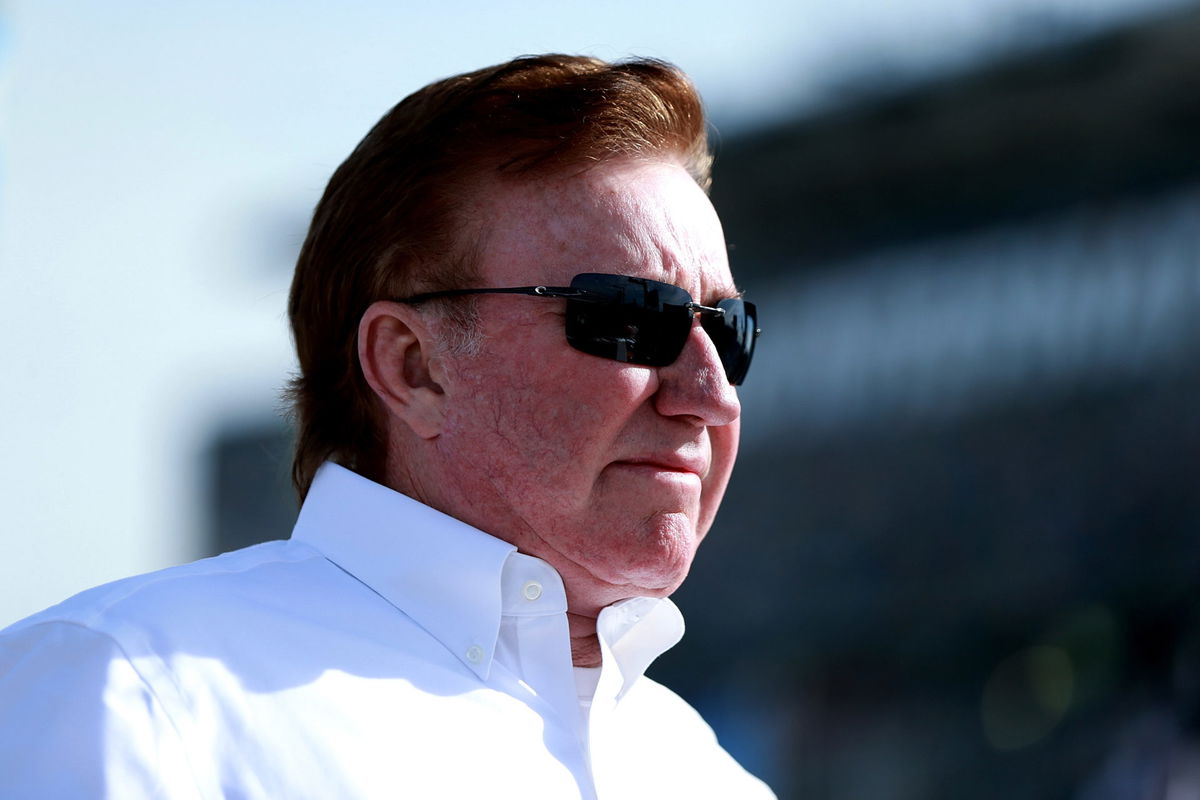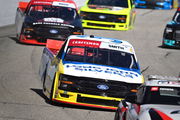
Getty
DAYTONA BEACH, FL – FEBRUARY 16: Team owner Richard Childress stands on the grid during qualifying for the NASCAR Xfinity Series NASCAR Racing Experience 300 at Daytona International Speedway on February 16, 2019 in Daytona Beach, Florida. (Photo by Sean Gardner/Getty Images)

Getty
DAYTONA BEACH, FL – FEBRUARY 16: Team owner Richard Childress stands on the grid during qualifying for the NASCAR Xfinity Series NASCAR Racing Experience 300 at Daytona International Speedway on February 16, 2019 in Daytona Beach, Florida. (Photo by Sean Gardner/Getty Images)
What if you were told that Dale Earnhardt’s fourth title was won through manipulation instead of merit? The #3 Chevrolet driver of Richard Childress Racing was an undisputed legend. But his team owner Richard Childress got away with many contentious actions that would have been heavily penalized today.
Watch What’s Trending Now!
NASCAR’s technological advancements led to greater scrutiny by the governing body and the once champion team has been left searching for its next trophy for nearly 30 years. In a recent interview, Childress opened up on the break-neck speed of modern innovation that has compelled racing teams to step up their game.
ADVERTISEMENT
Next Gen cars have made engine manipulation trickier, per Richard Childress
The swanky Next Gen race cars have come a long way from the stock cars that were originally used for racing on Daytona Beach. Over the years, the unmodified stock version of street cars took a more distinct “racecar” look when teams began modifying the engines, body parts, and materials to gain an advantage over their competitors. In the late 80s to early 90s, the alterations entirely transformed the Gen-3 and Gen-4 cars, and they were skillfully capitalized upon by Richard Childress Racing.
Perhaps fearing a disconnect from their fans due to a drastic lack of resemblance, the Generation VI and the Next Gen cars were once again designed to match their showroom counterparts. But the racing authorities also grew wary of the misuse of rapid technological growth, forcing teams to employ creative strategies within the limited room for changes granted by NASCAR. In a roundtable conducted at the North Wilkesboro Speedway, Richard Childress admitted, “I think these cars today, you constantly got to be looking for every advantage you can get within the rules.”
ON THIS DAY: Dale Earnhardt and RCR clinched the 1994 championship 25 years ago at Rockingham Speedway with a win over Rick Mast. 🏁
The win gave him a 448-point lead over Rusty Wallace, clinching the title with two races left in the season. 🏆#RCR50 pic.twitter.com/sAJRuWRhnw
— RCR (@RCRracing) October 23, 2019
ADVERTISEMENT
Recalling the days of greater leeway, Childress said, “Sometimes you go a little past it, but I think these cars are so tight today that there are a lot of things that you can’t do that we used to do to the cars.” That does not mean they don’t attempt it where they can. Childress revealed, “You still try to get it. Now we’re looking for thousands within the bodies or chassis or wherever we’re working, where before you could move pieces and parts and stuff. But the engineering side of it today is a whole key to it.”
However, the 78-year-old team owner has trouble keeping up with the intricate details and leaves it in the capable hands of his expert engineers. Childress continued, “I sit in there and watch our guys going through all the simulation and all the stuff they’re doing and it just amazes me. It’s way over my head. This is an old country boy. It’s just when they start talking all these numbers and stuff, it’s got so technical. They’re still innovating, but they’re doing it in a different way today through engineering.”
ADVERTISEMENT
ADVERTISEMENT
Watch this story: Rising Star Jesse Love: The New Face of Richard Childress Racing
Interestingly, RCR was also innovating through engineering in the 90s but was not above employing questionable mechanisms either.
Top Stories
Greg Biffle’s $4M Prized Possession Goes Up for Sale After Tragic Crash, Leaving NASCAR Fans Heartbroken

NASCAR World Mourns as Former Watkins Glen President Michael Printup Passes Away at 60

Fox Broadcaster Pens Heartfelt Message as Veteran Announcer Quits NASCAR

Denny Hamlin Offers First Words Since Losing Beloved Father in Anniversary Fire

3x Indy 500 Champion Driver Eyes to Live 19-YO Dream With Surprise NASCAR Return

ADVERTISEMENT
Racing teams doubted RCR engines during their golden years
After his first Winston Cup championship win in 1980, Dale Earnhardt moved to Richard Childress Racing to make NASCAR history. Together, they were unstoppable during their 17-year partnership, especially after legendary engineer Eddie Lanier joined the stable. Lanier was determined to produce a Daytona 500-worthy race car for the Intimidator in 1990.
Reported by motortrend.com, Lanier was quoted as saying, “That Earnhardt had won practically everything at Daytona except the 500 was always the big story.” In his enthusiasm to secure the prestigious race for Earnhardt, Lanier experimented with enhancing RCR’s engine quality. But the first set of modifications were outside the legally permissible bounds of NASCAR.
Lanier, however, had claimed to rectify and bring it within the legal limits. Although Earnhardt did not win the Daytona 500 till 1998, he did win nine races and the fourth Cup championship of his career in 1990. But the season ended on a controversial note when RCR led NASCAR to penalize eventual runner-up Mark Martin over engine allegations.
ADVERTISEMENT
Although proved to be unfounded later, the points lost by Martin paved the way for another title for Childress. As far as the racecar was concerned, Lanier maintained his unimpeachable stand. As reported by dailypress.com, the RCR engineer had then said, “I know quite a few teams think we were doing something illegal, but I can say with a clear conscience that we have never cheated on our engines.”
Nonetheless, the season’s disputed end and the recent admission by Richard Childress might make fans wonder about the veracity of that statement over two decades ago.
Read More: Richard Childress Puts His Stars Forward as the Fight for Chase Elliott’s Throne Begins
ADVERTISEMENT
ADVERTISEMENT
ADVERTISEMENT
ADVERTISEMENT

